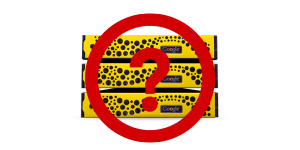If you’re checking to make see if you created an invoice that needs to be paid and you don’t find it in Windows search, maybe you try the native Outlook search.
Still not there? Now what? Call the client? If you choose to then call the client, it could lead to a loss of faith in your company or even worse, the loss of a client. Customers don’t want to hear that they haven’t paid a bill when they actually have and it can create a headache in a hurry.
Duplicating documents
If your Windows search doesn’t return a result that you need, it can quickly lead to data duplication. Data duplication has a real cost. Some estimate data duplication rates as high as 30% at a cost of between 10 and 20 dollars per duplicate.
Factors that contribute to cost are:
- Storage costs
- Man-power costs (duplicating existing data)
- Client satisfaction
If you’re looking at Windows search to help reduce duplication, it can’t be relied on. If you have a solid tool that can complete a windows search with better results, you will be able to organically reduce your data duplicates. Data deduplication at the end of the day is a labor intensive job. It needs eyeballs on the data to see what is important and what should be deleted. With a strong windows search tool, companies can achieve this without thinking about it.
Here is an example:
Steve has a client that ordered some marketing materials from his firm. That client would like to use the same copy, but add it to something different. Steve can do a simple Windows search and see that there is a file on his local drive that fits the description. He sends it off to the client and asks if that’s the copy he was talking about. What Steve doesn’t remember, or realize, is that the copy is old. The old copy had been sent over to the graphics department for revision and what he’s looking for is sitting in their file system. A centralized Windows search solution would have seen the updated version and Steve would have deleted his almost identical file. Instead, Steve gets a reply from the client saying that it’s old and needs to be re-worked. Steve takes the old file and sends it to the graphics department again. The graphics department doesn’t even do a Windows search because they think that it’s new copy and spend the rest of the day re-doing work that had already been done, and the duplication is never spotted.
A simple investment in a Windows search tool that is centrally located and provides real returns will give the entire company the ability to look out for duplicate information, and organically stop duplication from continuing.



Leave a Reply